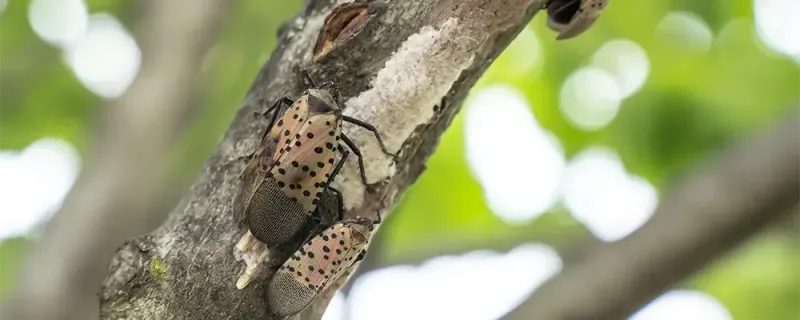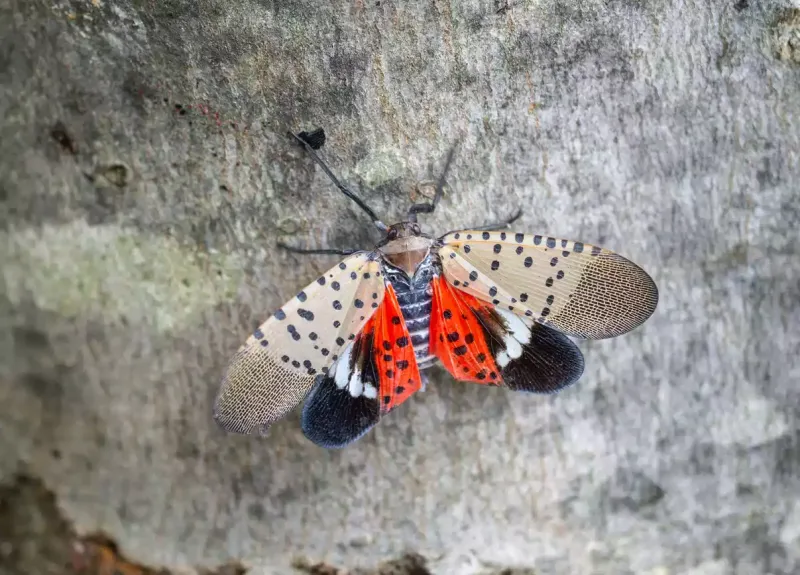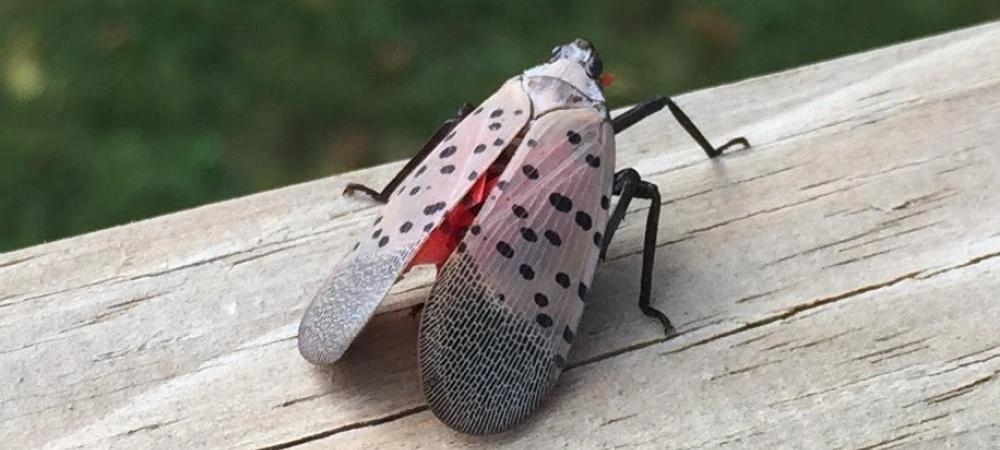Spotted Lanternflies are an invasive pest that poses a significant threat to agriculture, trees, and plants. If you’re a homeowner, understanding how to identify and manage these pests can help protect your property and local environment. Here’s everything you need to know.
What Are Spotted Lanternflies?
The Spotted Lanternfly (Lycorma delicatula) is an invasive planthopper native to China, India, and Vietnam. It was first detected in the United States in Pennsylvania in 2014 and has since spread to multiple states, including Massachusetts. Lanternflies primarily feed on the sap of trees, plants, and crops, causing stress and potential death to their hosts.
What Do Spotted Lanternflies Eat?
Spotted Lanternflies are sap-feeding insects with a voracious appetite for a wide variety of plants. Their preferred host is the invasive Tree of Heaven (Ailanthus altissima), but they also feed on over 70 plant species, including:
- Grapes
- Apples
- Hops
- Maple, walnut, and oak trees
By piercing plants with their straw-like mouths, they extract sap, leaving behind a sticky residue called honeydew. This promotes the growth of sooty mold, which can damage plants further and harm crops, especially in vineyards and orchards.
What Do Spotted Lanternflies Look Like?
Spotted Lanternflies (Lycorma delicatula) are striking insects with a distinctive appearance. Adult lanternflies are about 1 inch long and ½ inch wide, with gray wings adorned with black spots. When their wings are open, they reveal bright red hindwings with black spots, a white band, and black tips. Their legs and head are black, while their abdomen features yellow segments with black bands. Nymphs, or immature lanternflies, are black with white spots early in development, transitioning to bright red with white spots as they mature. These vibrant colors make them easy to identify.
What Is the Life Cycle of Spotted Lanternflies?
Spotted Lanternflies go through several stages of development, each with unique characteristics:
- Egg Masses: Look like grayish-brown, mud-like smears on trees, rocks, or outdoor objects. Each mass can contain 30-50 eggs.
- Nymphs: Hatch in spring and appear black with white spots. As they mature, they develop red patches.
- Adults: Approximately 1 inch long, with gray forewings and black spots. Their hindwings are red, black, and white, making them distinctive when spread.
What States Have Spotted Lanternflies?
Native to Asia, Spotted Lanternflies were first detected in Pennsylvania in 2014. Since then, they’ve spread to several states, including:
- Pennsylvania
- New York
- Delaware
- West Virginia
- New Jersey
- Maryland
- Virginia
- Ohio
Efforts are underway to contain their spread, as they pose a significant threat to agriculture and forestry. However, they continue to expand their range, particularly along transportation routes and in areas where the Tree of Heaven is prevalent.
Where Can Spotted Lanternflies Be Found?
Spotted Lanternflies thrive in temperate environments where their preferred host plants grow. You’ll often find them in areas with dense vegetation, like forests, agricultural fields, and urban parks. They tend to congregate on the trunks and branches of trees, particularly those of their favored host species.

Why Are Spotted Lanternflies Dangerous?
Spotted Lanternflies are a significant threat to agriculture, forestry, and natural ecosystems. Their feeding habits cause extensive damage to plants, particularly crops and trees. By consuming sap, they weaken plants, reducing their growth, productivity, and overall health. The sticky honeydew excreted by lanternflies fosters the growth of sooty mold, which can further harm plants and hinder photosynthesis.
Key Impacts:
- Agriculture: Lanternflies threaten vineyards, orchards, and hops farms by damaging crops and reducing yields.
- Forests: Their feeding can weaken hardwood trees, potentially disrupting ecosystems.
- Urban Areas: They infest ornamental plants and trees, creating a nuisance for homeowners and landscapers.
The economic damage from this invasive pest is projected to reach billions of dollars if left unchecked.
Are Spotted Lanternflies Dangerous to Humans?
No, spotted lanternflies are not directly dangerous to humans. They do not bite, sting, or spread diseases to people or pets. However, their presence can significantly impact human activities by damaging crops, trees, and outdoor spaces. Additionally, the sticky honeydew they excrete can make surfaces slippery and attract other pests like ants and wasps, indirectly creating nuisances for humans. Spotted lantern flies are also attracted to light, so they may congregate around doors and windows, which can be a nuisance.
How Do Lanternflies Spread?
Spotted Lanternflies are highly mobile and adept at spreading through natural and human-assisted means:
- Natural Dispersal: Adults are strong jumpers and fliers, allowing them to move short distances in search of new hosts.
- Egg Mass Transport: Spotted Lanternflies lay eggs on nearly any flat surface, including tree bark, vehicles, outdoor furniture, and even packages. Eggs can easily be transported to new areas by humans without being noticed.
- Hitchhiking: Adults and nymphs can travel on cars, trucks, trains, and other vehicles, spreading them far from their original locations.
Prevention and early detection are crucial to limiting the spread of Spotted Lanternflies. Regular inspection of vehicles, outdoor equipment, and plants can help reduce their movement into unaffected areas.
What Does Spotted Lanternfly Damage Look Like?
Spotted Lanternfly damage is characterized by visible stress on plants and trees. Common signs include:
- Oozing Sap: Plants may exude sap from wounds caused by feeding.
- Wilting and Leaf Curling: Leaves may appear wilted or curled due to the loss of nutrients.
- Black Mold Growth: Honeydew excreted by lanternflies promotes the growth of sooty mold, creating unsightly black patches on leaves, bark, and nearby surfaces.
- Reduced Crop Yield: In agricultural settings, fruit production may decline significantly.
Inspecting plants regularly for these signs can help identify and address infestations early, minimizing damage.

Call Ransford Pest Control for Professional Spotted Lanternfly Treatments
Dealing with a Spotted Lanternfly infestation can be overwhelming, but you don’t have to handle it alone. At Ransford Pest Control, we offer expert solutions tailored to your needs. Our licensed professionals use proven methods to eliminate Spotted Lanternflies and protect your property from further damage. Contact our team today!

